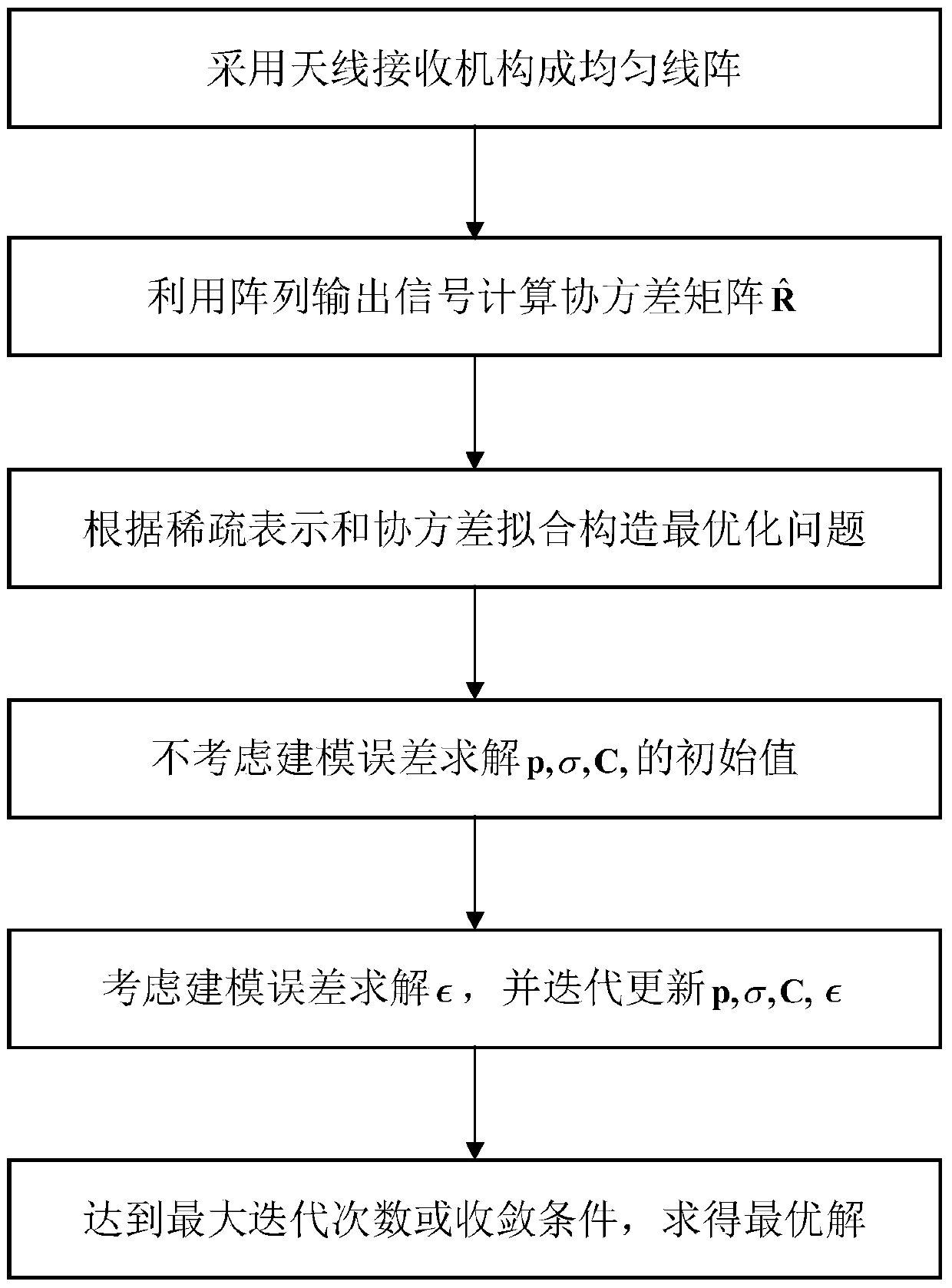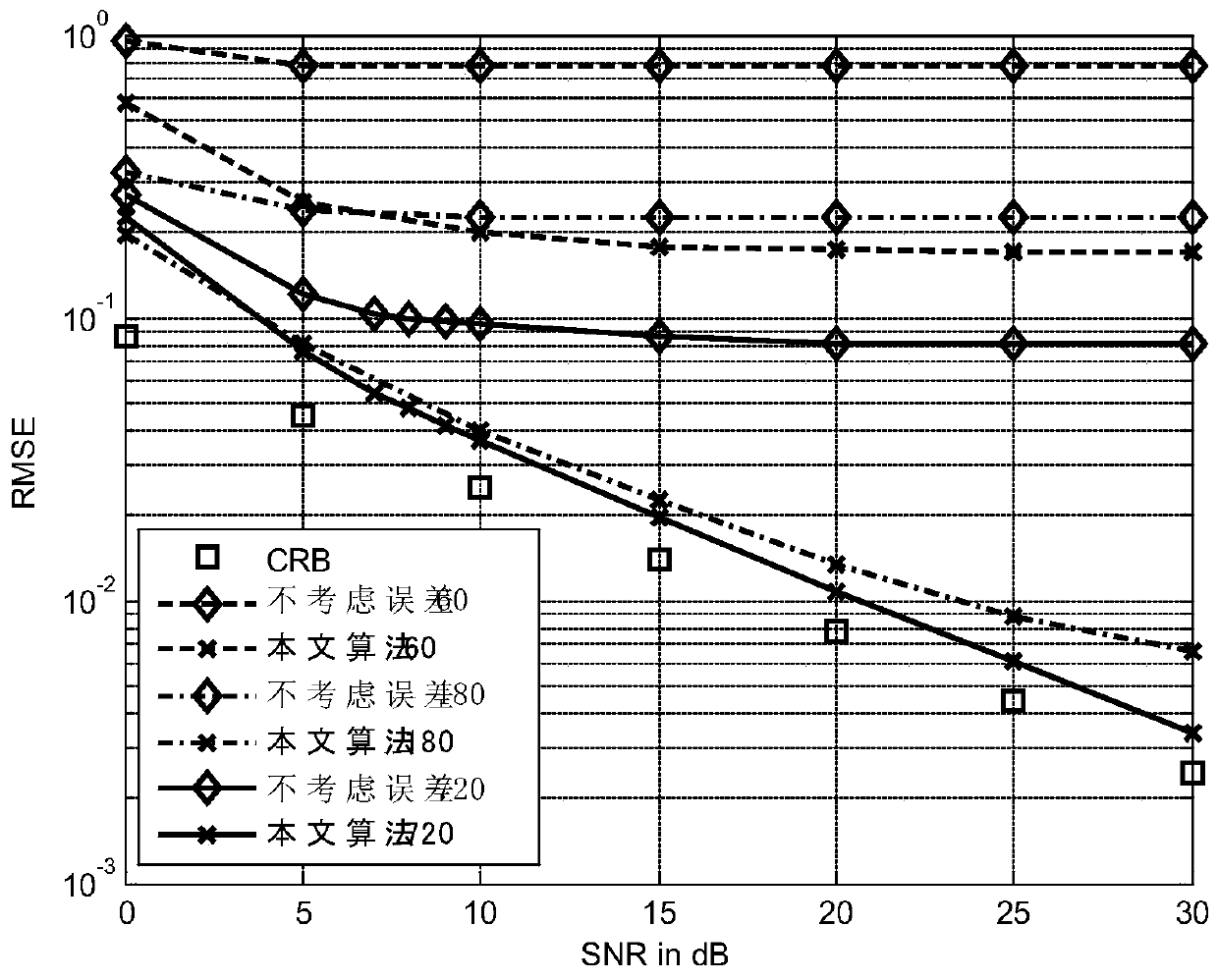A Robust Angle of Arrival Estimation Method Based on Sparse Representation and Covariance Fitting
A sparse representation and covariance technique, applied in the field of signal processing, which can solve problems such as estimation accuracy limitations
- Summary
- Abstract
- Description
- Claims
- Application Information
AI Technical Summary
Problems solved by technology
Method used
Image
Examples
Embodiment Construction
[0055] refer to figure 1 , the implementation steps of the present invention are as follows:
[0056]Step 1: Use N omnidirectional antenna receivers to form a uniform linear array to estimate the direction of K narrowband signal sources in space. The possible direction set of the signal source is Ω, and the candidate direction network is covered on it where θ k Represents a generic orientation parameter.
[0057] Step 2 Calculate the theoretical expression of the signal covariance matrix R and the actual sampling value according to the output signal of the antenna array
[0058]
[0059]
[0060] Step 3: Use the covariance matrix to construct an optimization problem for parameter estimation:
[0061] Using the parameterized expression of covariance about p, σ, ∈ in step 2), the weighted covariance fitting criterion for direction estimation is obtained, and the optimization problem is established by combining the constraints of the parameters themselves. Since the o...
PUM
 Login to View More
Login to View More Abstract
Description
Claims
Application Information
 Login to View More
Login to View More - Generate Ideas
- Intellectual Property
- Life Sciences
- Materials
- Tech Scout
- Unparalleled Data Quality
- Higher Quality Content
- 60% Fewer Hallucinations
Browse by: Latest US Patents, China's latest patents, Technical Efficacy Thesaurus, Application Domain, Technology Topic, Popular Technical Reports.
© 2025 PatSnap. All rights reserved.Legal|Privacy policy|Modern Slavery Act Transparency Statement|Sitemap|About US| Contact US: help@patsnap.com



